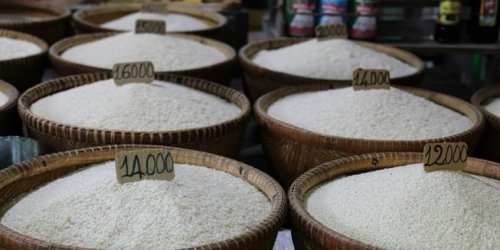
Beras Oplosan Price in Indonesia is Unbelieveable Expensive
Recently, Indonesia has been shaken by an adulterated rice (beras oplosan) scandal involving large-scale distributors. Rice (beras) is Indonesia’s staple food, consumed by over 270 million people daily.
These fake rice products—blended with lower-quality grains, chemicals, or mislabeling—have flooded the market, leading to unfair pricing, economic losses, and potential health risks.
1. What Is Beras Oplosan/ Adulterated Rice?
“Beras oplosan” refers to the illegal practice of mixing different grades of rice—often combining premium and medium-quality rice to falsely increase value. In some cases, artificial agents like bleach, plastic fragrance, or even synthetic rice are used to enhance appearance or scent.
According to the University of Gadjah Mada (UGM), these practices pose severe health risks, from kidney damage to carcinogenic effects, especially if consumed long-term.
2. Price Gap: Premium vs. Medium Rice
The Indonesian National Food Agency (Bapanas) sets a Highest Retail Price (HET) to control rice affordability:
| Rice Type | HET (Rp/kg) | Actual Market Price (Rp/kg) |
|---|---|---|
| Medium Rice | 12,500 | 14,050 |
| Premium Rice | 14,900 | 15,929 |
Sources: CNN Indonesia, Bloomberg Technoz
As shown in the chart above, real-world prices have exceeded the HET by 7% to 12.4%, revealing a potential abuse of classification and deceptive pricing tactics.
Read Also : Is a Salary of IDR 5 Million Enough to Live in Jakarta in 2025?
3. Massive Financial Losses
The Minister of Agriculture stated that adulterated rice causes a Rp 100 trillion (~USD 6.2 billion) economic loss per year. This is a significant blow that could have otherwise contributed to GDP growth or food security programs.
A nationwide investigation by Bapanas in July 2025 found that:
- 85.56% of “premium rice” products failed to meet required standards.
- 59.78% were priced illegally above HET.
- 21.66% had incorrect net weight on packaging.
(Source: Harian Jogja)
4. Legal Action: Rice Fraud Under Fire
The authorities have taken strict measures:
- Three directors of PT Padi Indonesia Maju (brands: Fortune, Sania, Sovia) were declared suspects.
- Law enforcement seized 58.9 tons of manipulated rice.
- Legal charges involve Consumer Protection Law No. 8/1999 and Anti-Money Laundering Law No. 8/2010, with potential penalties of up to 20 years in prison or Rp 10 billion in fines.
(Sources: Detik News, MetroTV News)
5. Health Concerns: Not Just About Price
Food safety experts from UGM warn that chemical-laced rice could cause:
- Liver and kidney problems
- Carcinogenic exposure
- Immune system disruption
Synthetic rice-like materials have even been linked to plastic content, especially when fragrant or visually perfect rice is sold at below-premium prices.
6. Government and Market Response
Following the scandal, market behaviors have shifted:
- In Bali, premium rice prices dropped from Rp 15,200 to Rp 14,800/kg after enforcement intensified.
- Lawmakers worry that pulling adulterated rice from shelves could create a supply vacuum, driving prices even higher.
- Bapanas and regional governments now actively audit packaging, labeling, and rice quality at distribution hubs and retail stores.
(Sources: Merah Putih, BRMP Bali)
7. Chart: HET vs. Actual Price (2025)
As visualized in the chart, the actual market price of both medium and premium rice exceeds the government’s HET, suggesting:
- Producers may be manipulating classification labels
- Retailers are not complying with national pricing laws
- Consumers are being misled or overcharged
The ongoing rice adulteration scandal is more than a food fraud—it’s a national crisis affecting trust, economy, and health. While the government’s legal crackdown is commendable, deeper reforms are needed in food labeling, supply chain oversight, and consumer education.

Leave a Reply